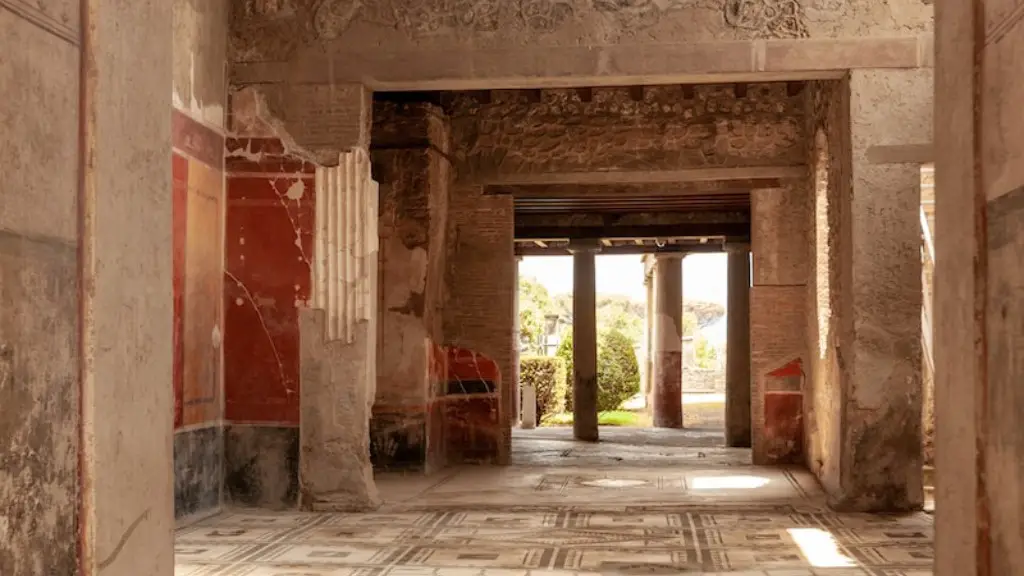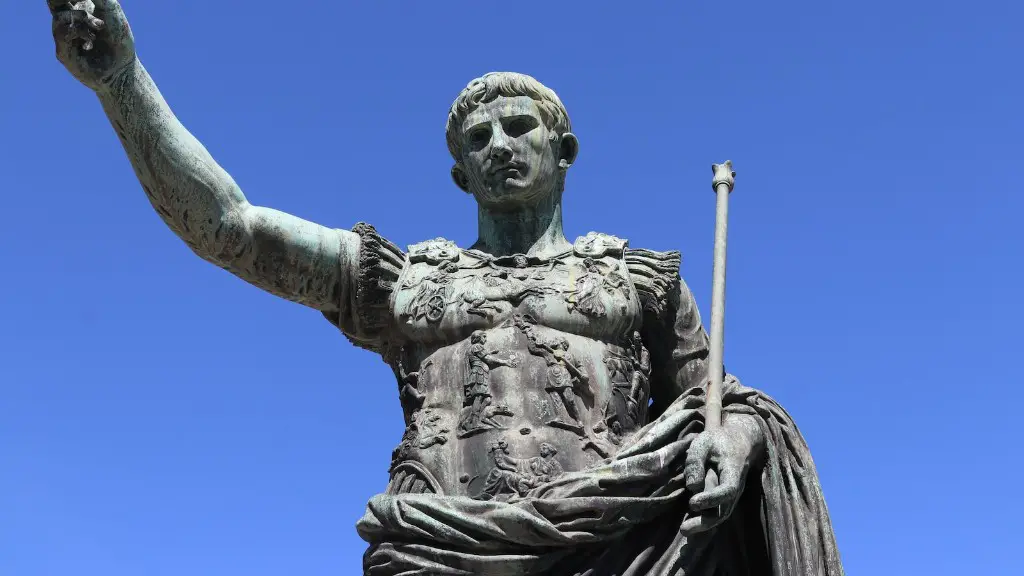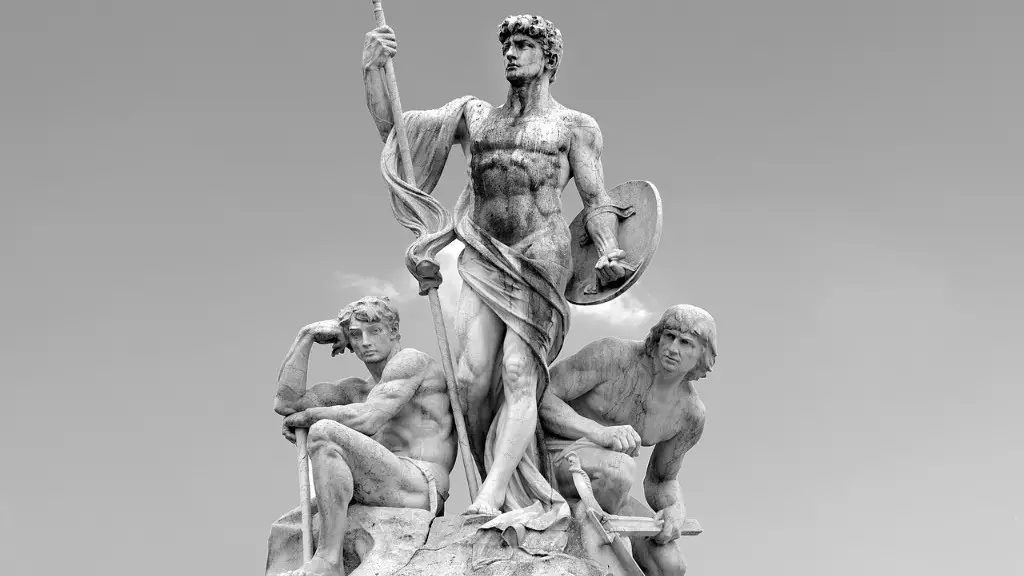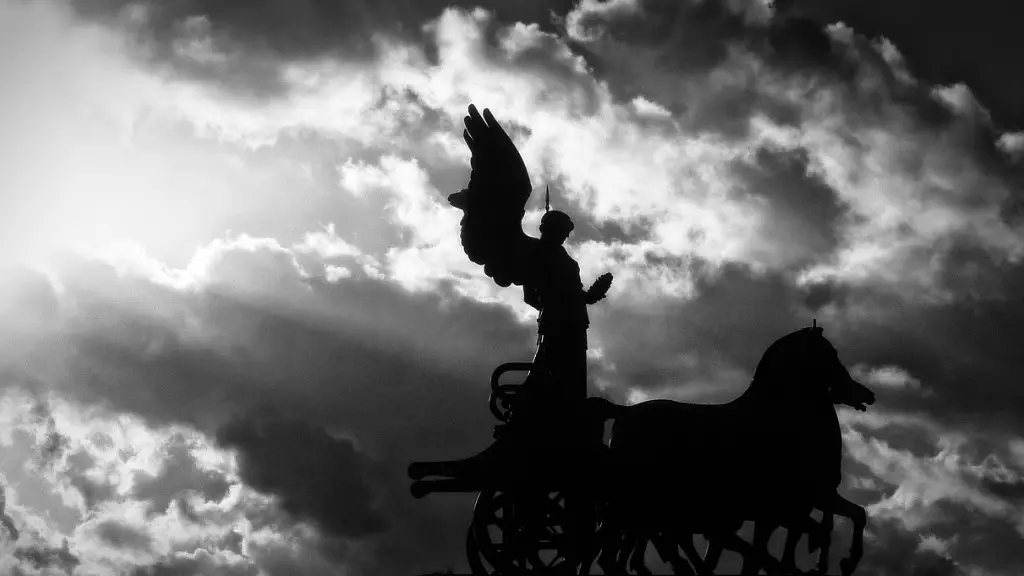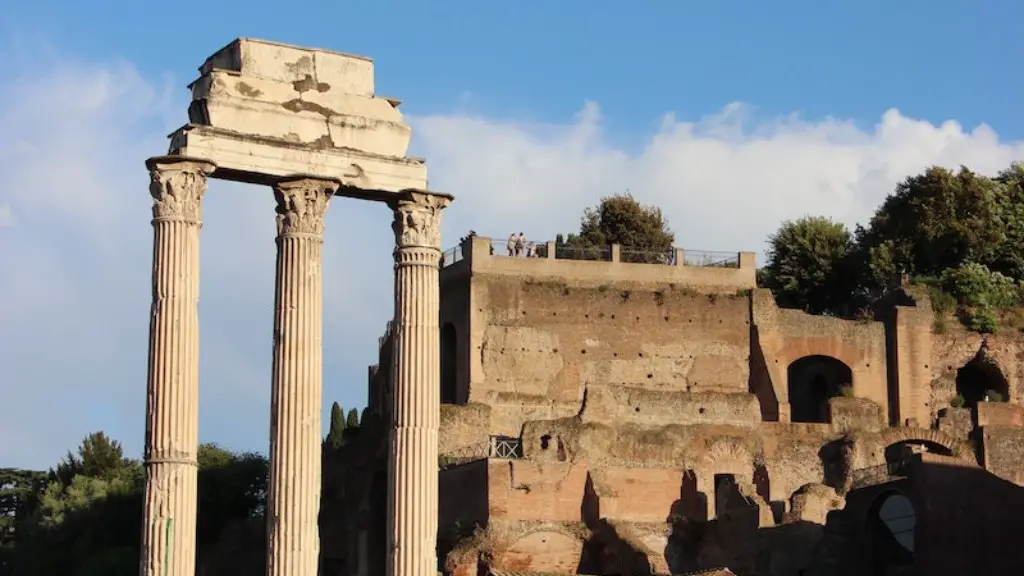The ancient Romans had a long and complex belief system, one that was constantly changing and evolving. They respected, feared and venerated the gods, and believed that their beliefs had direct effect on the success of their society. So what type of religion did ancient Romans practice?
Rome’s traditional religion, known as Roman polytheistic faith, was based on a number of gods and goddesses. These deities were represented in a number of ways, from statues and paintings to temples and festivals. The Romans believed that these gods were responsible for the health, wealth and success of their society. The chief gods were Jupiter, Juno and Minerva, who were the equivalent of the Greek Zeus, Hera and Athena.
The Roman religion was very different from the religions of Greece, Egypt, or Mesopotamia. Rather than worshipping a single deity or pantheon, the ancient Romans had multiple gods to whom they paid homage. Religion had a deep effect on Roman life and culture. For example, religious festivals were an important part of life and were often used as an opportunity for political displays and pageantry. Religion also informed Roman law, and many of the laws were based on religious principles.
The religion of ancient Rome was highly ritualistic, with a wide variety of rituals for different occasions and celebrations. One of the most important rituals was the Augural ritual, which was used to determine if a particular ceremony or event was favorable or not. This ritual consisted of a priest or augur reading the omens from an animal sacrifice and using it to interpret the will of the gods.
Another important aspect of Roman religion was the belief in the power of magic. Magic was used to ward off evil spirits, resolve disputes and bring good luck. Magic was believed to be so powerful that it could even be used to control people’s destinies. This belief in the power of superstition and magic was wide-spread in the Roman Empire.
In addition to its traditional religion, Rome was also open to the introduction of new religions from abroad. Over the centuries, the Romans absorbed aspects from the religions of the Greeks, the Celts, the Egyptians and many others. During the Roman Empire, it became common for wealthy Roman elites to take up the worship of eastern deities such as Isis, Baal and Mithras.
While the ancient Romans had their own traditional religion, it was far from a unified system of beliefs. Instead, the Romans were open-minded and had no problems with accommodating, modifying and even outright adopting beliefs from other cultures. This openness allowed the Romans to develop a diverse, ever-changing religious system.
Roman Pantheon
The Roman pantheon consisted of a large number of gods and goddesses. These deities played important roles in Roman society, and each had their own areas of influence. Jupiter was the king of the gods and was responsible for protecting Rome and its people. Juno was the queen of the gods and the guardian of women, marriage and childbirth. Other members of the pantheon included Mars, the god of war; Apollo, the god of the sun; Bacchus, the god of wine; and Neptune, the god of the sea.
The Romans also adopted gods and goddesses from foreign religions. For example, the Roman goddess of love was Venus, who was adopted from the Greek goddess Aphrodite. Similarly, the Greek god of fire, Hephaestus, was adopted by the Romans as Vulcan.
The cults of many of these gods and goddesses were popular and had their own festivals, rituals and temples. Each god or goddess had a special day dedicated to them, and these days were marked on calendars and celebrated through festivals.
The power and influence of the gods was an important part of Roman life and beliefs. They believed that the gods controlled their destinies and had an important role to play in determining their fortunes. The Romans also believed that the gods could be appeased through rituals and offerings, and this was a common practice in everyday life.
Mysterious Cult of Mithras
One of the most influential and mysterious cults in the Roman Empire was the cult of Mithras. This cult originated in the Persian religion and revolved around the worship of the god Mithras. The cult was popular among soldiers, and its secretive rituals were held in spiritual enclaves known as Mithraea and were open only to initiates.
The cult of Mithras was centred around the mystery of the bull’s slaying. This mystery was enacted in mysterious ceremonies by the cult’s members. It was believed that Mithras killed a bull that represented cosmic chaos. This killing signified the victory of light and order over darkness and chaos, and was seen as a metaphor for the struggle between good and evil.
The cult of Mithras spread quickly throughout the Roman Empire. It was popular among soldiers and many of the emperors of Rome embraced its teachings. Although the cult eventually declined, it still had a profound impact on Roman religion and culture.
Decline of Roman Religion
As the Roman Empire grew, so did the number of foreign religions and cults that were embraced by the Roman people. This eventually led to the decline of the traditional Roman faith. Christianity became the dominant religion of the Roman Empire, and with its spread, the old gods and beliefs were replaced with the new one.
During the fourth century AD, the Roman Emperor Constantine officially declared Christianity to be the religion of the Empire. This was a major turning point in Roman religion and marked the beginning of the end of the old gods and beliefs. The old religions were replaced by the new one, and the traditional Roman faith was largely abandoned.
By the fifth century AD, the old gods of Rome had all but disappeared from the public consciousness. Roman religion had been replaced by Christianity, and the days of worshipping the gods of Rome had come to an end.
Legacy of Roman Religion
Despite its decline, the religion of ancient Rome had a lasting legacy on world culture. Many of the traditions and beliefs of the ancient Romans are still practiced today, such as the traditional ceremonies of marriage and the celebration of religious festivals.
The influence of ancient Roman religion can also be seen in contemporary literature and art. Many of the gods and goddesses of Rome have been immortalized in works of literature, and their myths and tales have inspired countless works of art.
The religion of ancient Rome has also had a profound effect on modern society. Its ethical and moral values have served as a blueprint for many of the laws and regulations of the modern day. From the celebration of holidays and festivals to the protection of religious freedom, the legacy of Roman religion can still be seen today.
Roman Religion vs Christianity
Despite the rise of Christianity, the religion of ancient Rome had a profound effect on the development of the new faith. Many of the traditions and rituals of the ancient faith were adopted by Christianity, and the gods and goddesses of Rome were incorporated into the new religion.
However, there were some key differences between the two faiths. While ancient Roman religion was based on many gods, Christianity was based on just one. The focus of Roman religion was on appeasing and venerating the gods, while Christianity is based on the belief in one God.
The two religions also had very different moral systems. The ancient Romans believed in a moral code that was based on laws and customs. Christianity, on the other hand, is based on the teachings of Jesus, which provide guidance on right and wrong.
Conclusion
The religion of ancient Rome was far-reaching and influential. Its traditions, rituals and beliefs had a deep effect on Roman culture, art and literature. Although the old gods have gone, they have left their mark on the world, and their legacy can still be seen today.
